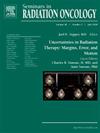前列腺癌连续治疗过程中的健康差异和不公平
IF 3.2
3区 医学
Q3 ONCOLOGY
引用次数: 0
摘要
前列腺癌仍然是世界上最常见的恶性肿瘤之一,但在整个治疗过程中仍然存在显著的差异和不平等。黑人男子面临着不成比例的负担,发病率和死亡率最高。老年患者通常接受较少的积极治疗,尽管风险较高。保险状况严重影响及时诊断和治疗;没有保险和保险不足的个人更有可能经历护理延误,导致更糟糕的预后。农村居民和低收入人群获得专业护理的机会有限,而受教育程度较低的人群则减少了筛查和后期诊断。差异延伸到活检技术和治疗决策。黑人和其他服务不足的人群不太可能接受有针对性的活组织检查,这已被证明可以改善肿瘤特征和风险分层。此外,他们更有可能接受不确定的治疗,即使出现高风险、潜在致命的疾病。社会经济障碍、医疗服务可及性、提供者偏见以及临床试验代表性不足和被排除等进一步加剧了这些差异,限制了针对不同人群量身定制的精准医疗方法的机会。解决这些不平等问题需要采取多方面的办法,包括增加获得先进诊断和治疗方法的机会,改善研究中的代表性,以及将健康的社会决定因素纳入前列腺癌管理战略。关于放射基因组学和分子生物标志物的新证据为个性化护理提供了有希望的途径,但公平实施对于避免扩大现有差距至关重要。齐心协力消除差异对于在所有人群中实现公平的前列腺癌结局至关重要。本文章由计算机程序翻译,如有差异,请以英文原文为准。
Health Disparities and Inequities in Prostate Cancer Along the Continuum of Care
Prostate cancer remains one of the most commonly diagnosed malignancies worldwide, yet significant disparities and inequities persist across the continuum of care. Black men face a disproportionate burden, exhibiting the highest incidence and mortality rates. Older patients often receive less aggressive treatment despite higher risk profiles. Insurance status critically influences timely diagnosis and treatment; uninsured and underinsured individuals are more likely to experience delays in care, leading to worse prognoses. Rural residents and those with lower-income have limited access to specialized care while those of lower education status have reduced screening and later-stage diagnoses. Disparities extend to biopsy techniques and treatment decisions. Black and other underserved populations are less likely to undergo targeted biopsies, which have been shown to improve tumor characterization and risk stratification. Additionally, they are more likely to receive non-definitive management, even when presenting with high-risk, potentially lethal disease. Socioeconomic barriers, healthcare access, provider biases, and underrepresentation and exclusion from clinical trials further exacerbate these disparities, limiting opportunities for precision medicine approaches tailored to diverse populations. Addressing these inequities requires a multifaceted approach, including increasing access to advanced diagnostics and therapeutics, improving representation in research, and integrating social determinants of health into prostate cancer management strategies. Emerging evidence on radiogenomics and molecular biomarkers offers promising avenues for personalized care, but equitable implementation is crucial to avoid widening existing gaps. A concerted effort to eliminate disparities is essential to achieving equitable prostate cancer outcomes across all populations.
求助全文
通过发布文献求助,成功后即可免费获取论文全文。
去求助
来源期刊
CiteScore
5.80
自引率
0.00%
发文量
48
审稿时长
>12 weeks
期刊介绍:
Each issue of Seminars in Radiation Oncology is compiled by a guest editor to address a specific topic in the specialty, presenting definitive information on areas of rapid change and development. A significant number of articles report new scientific information. Topics covered include tumor biology, diagnosis, medical and surgical management of the patient, and new technologies.

 求助内容:
求助内容: 应助结果提醒方式:
应助结果提醒方式:


